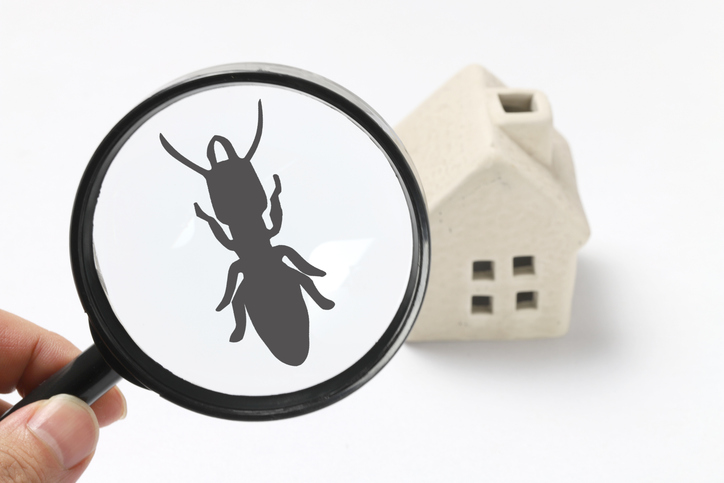
Spotting the Difference: Ants vs. Termites
Homeowners often first notice a termite infestation or an ant infestation when winged swarmers appear inside or around their home. But how do you know if you’re dealing with flying ants or termites? Correct Florida termite identification is critical because the treatment for ants and termites is completely different.
Misidentifying these pests can lead to ineffective DIY treatments, giving an infestation time to grow. That’s why it’s essential to call a professional pest and termite control company for a proper inspection and treatment plan.
Key Differences Between Ants and Termites
How to Identify Ants and Termites by Appearance
Both flying ants and termites have wings, but their body structures are quite different. These characteristics are a straightforward way to distinguish between the two.
Ants:
- Bent (geniculated) antennae.
- Pinched waist, creating three distinct body segments.
- Hindwings smaller than forewings
- Ants have wings which are unequal in length and generally end at the tip of the abdomen.
Termites:
- Straight antennae
- Wide waist, giving their body a more uniform shape.
- Four equal-sized wings, which is why they belong to the order “Isoptera,” meaning equal-wings.
Behavioral Differences Between Ants and Termites
Termites often remain hidden within wood or mud tubes as they tunnel through homes, silently causing structural damage. Subterranean termites require moisture and build mud tubes to travel between the soil and the structure, while drywood termites live entirely inside wooden structures, making them more difficult to detect.
In contrast, ants are frequently seen crawling on floors, countertops, and walls or trailing up the exterior of a home. Carpenter ants, though often mistaken for termites, do not eat wood but instead tunnel into it to create nests, contributing to structural concerns and confusion among homeowners.
Common Confusion: Flying Ants vs. Termites
One of the most frequent questions homeowners ask is, “Do ants have wings, or are they termites?” Both ants and termites produce winged swarmers, particularly during warm seasons, but there are key differences. Flying ants are reproductive members of their colony but do not cause structural damage like termites.
On the other hand, termite swarmers signal serious infestation, as they indicate a mature colony actively looking for new nesting sites. If you notice winged insects in your home, don’t take chances, and schedule a professional inspection to protect your property.
Why Proper Identification Matters for Pest Control
Because termites and ants require different treatments, misidentification can lead to wasted time and money. Subterranean termites, whose colonies extend underground, require baiting systems or liquid termiticide barriers for effective control. Drywood termite colonies are smaller and isolated, meaning multiple independent colonies can exist within a home.
This is quite different than ant infestations. Ants require species-specific approaches. Sugar-based baits work best for ghost ants and white-footed ants, while protein-based baits are more effective for carpenter ants, fire ants, and big-headed ants.
All these reasons are why DIY termite control and ant control is not recommended. A professional pest expert can correctly identify the pest and apply the appropriate treatment to fully eliminate the infestation.
Contact Hulett for Expert Pest Identification and Control
When it comes to flying ants vs. termites, guessing can be a costly mistake. The best way to protect your home is with a professional pest inspection.
Hulett Environmental Services provides expert termite and pest identification to ensure your home receives the correct treatment. Our trained professionals inspect both interior and exterior areas to locate infestations and recommend effective, long-lasting solutions. Schedule a free ant and termite inspection with Hulett today.




